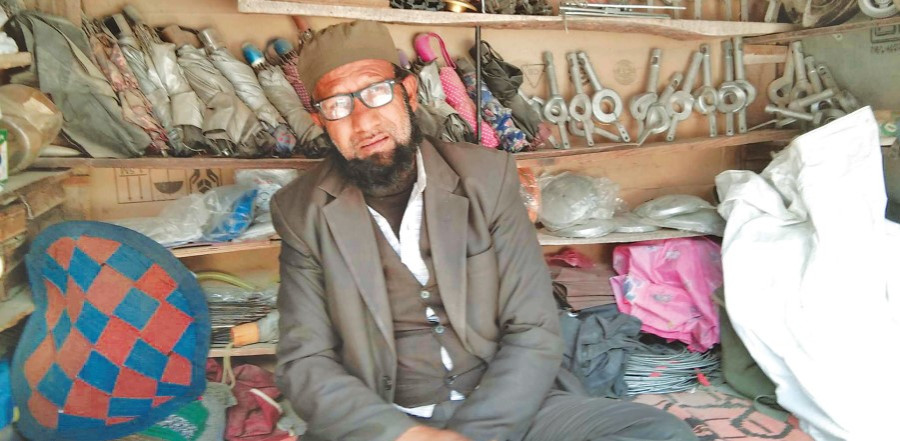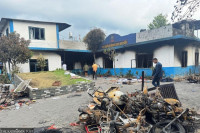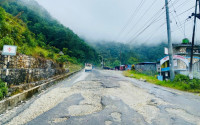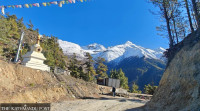Gandaki Province
Baglung’s Muslims struggle for burial ground
When a woman died last month, the community had to charter a vehicle to take the body to the neighbouring Gulmi district for burial.
Prakash Baral
Rahamat Hakim, aged 61, used to sell bangles and cosmetics along with his parents in Baglung, a hill district of Gandaki Province. After his parents’ death, Rahamat has been staying in Hatiya Bazaar in ward 3 of Galkot Municipality. He has built a hut in a rented land and ekes out a living for his 10-member family by repairing umbrellas and household items. He does not have any land of his own.
Rahamat is not much worried about his work or providing for his family. But, like others in his community, he is deeply anxious about managing burial grounds when they face bereavement. There are around 40 Muslim households in the area, but they do not have any places nearby to give proper burials to their deceased loved ones.
Twenty-two-year-old Sapana Khatun died by suicide last month. The Muslim community could not find a place to bury her in the Galkot area. They attempted to find a place in the Daramkhola, Gaudikhola and surrounding areas but to no avail. Ultimately, they had to take the body all the way to Shantipur of Gulmi, a hill district in neighbouring Lumbini Province.
“We could not find a vehicle to take the body there (Shantipur). So there was no alternative to chartering a bus by paying a hefty sum. A total of around Rs100,000 was spent to take the body to the burial ground and return home,” said Rahamat.
While only a few Muslim families own land, most of the Muslims in the Galkot area are landless. Spending Rs100,000 just on the burial process is very high for the impoverished community. “After learning about the problem faced in managing the body, the municipality provided them Rs25,000. The Muslim community struggles to find burial grounds,” said Bharat Gaire, mayor of Galkot Municipality.
The Muslim community used to bury their dead on the banks of the Kaligandaki river in Maldhunga, the border area of Baglung and Parbat districts. Maldhunga is around 60 kilometres from the Galkot area. “We had to spend nearly Rs100,000 to take a body in a chartered vehicle for burial. The locals obstructed us from burying the body there citing concerns about pollution. It is our cultural practice to bury our dead, ” said Rahamat. He recalled an incident a few years ago when the Maldhunga locals tried to stop the Muslims from burying a dead relative. “We were only able to bury the body with the help of the people’s representatives and civil society leaders,” he added.
For the past four decades, ten Muslim families have been living near the Gaudikhola stream by paying rent to the landowners. Some of them came to Galkot from Amalachaur of Baglung, while others migrated from Gulmi and Arghakhanchi districts. The adult males either run small shops in shacks or work as daily wage labourers. The females are mostly unemployed. Occasionally, they extract sand, crush pebbles and earn a meagre income.
“Our ancestors came to this area from Amalachaur as itinerant traders mainly to sell bangles, and settled here. We don’t have anywhere else to go,” complained Kamaludin Miya, another member of the community. According to him, around 20 Muslim families in the area are still landless while a few have bought land in Galkot.
The Muslim community has been asking for burial grounds for a long time. “We have been telling the authorities about our problem, but nothing has been done yet” said Rahamat.
But Galkot mayor says the municipality is well aware about the challenges faced by the community in handling dead bodies. “We provide them assistance during their times of need. But the municipality is unable to secure land for burials. The municipality has been searching for land to address their problem,” said Gaire.




 7.12°C Kathmandu
7.12°C Kathmandu.jpg)








%20(1).jpg&w=300&height=200)

